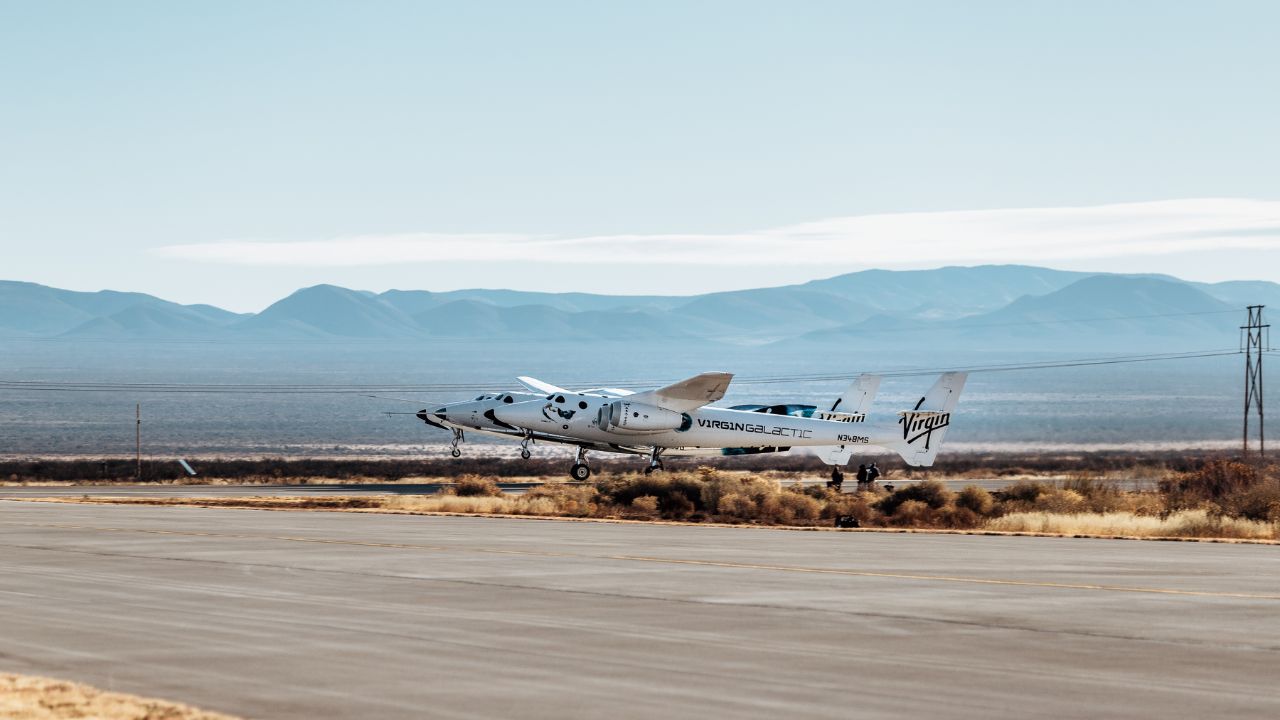Rocket motor fails to ignite on Virgin Galactic test flight
SpaceShipTwo Unity lands safely after test flight cut short
A Virgin Galactic test flight Saturday ended prematurely as the spacecraft's rocket motor failed to ignite and it then glided down safely to its landing site in southern New Mexico.
“The ignition sequence for the rocket motor did not complete. Vehicle and crew are in great shape," Virgin Galactic said in a brief statement on Twitter. “We have several motors ready at Spaceport America. We will check the vehicle and be back to flight soon."
The hourlong flight was the first from Virgin Galactic’s new headquarters at Spaceport America, a futuristic desert outpost where the aircraft carrying the spacecraft took off at approximately 8:25 a.m.
| Ticker | Security | Last | Change | Change % |
|---|---|---|---|---|
| SPCE | VIRGIN GALACTIC HOLDINGS INC. | 2.53 | -0.04 | -1.56% |
VIRGIN GALACTIC UNVEILS MACH 3 SUPERSONIC JET
Before first announcing the spacecraft's safe return to land and then the problem with the rocket, Virgin Galactic's updates on Twitter about the flight's progress were cryptic and sparse during a 15-minute period that began with an announcement that the spacecraft was “go for release" from the aircraft that carried it to the release altitude.
The company has said previously that release of the spacecraft from the aircraft would occur at about 50,000 feet (15.2 kilometers). At that point, the spaceship would enter a gentle glide and that within seconds the rocket motor would be fired and the spaceship’s nose pitched to a near-vertical climb towards space.
The suborbital flights are designed to reach an altitude of at least 50 miles (80.5 kilometers) before gliding to a landing.
The flight was the first from Virgin Galactic’s new headquarters at the futuristic desert outpost. (Ben Reagan for Virgin Galactic)
GET FOX BUSINESS ON THE GO BY CLICKING HERE
After delays due to the coronavirus pandemic and some dicey weather earlier this week, the crew had been cleared for a morning launch amid clear conditions.
The spaceship was crewed by two pilots. There was payload belonging to NASA onboard but no passengers.
The next phase of final testing for the Virgin Galactic team will involve company mission specialists and engineers being loaded into the spaceship’s passenger cabin for powered flights. They will evaluate all the hardware, camera settings and which angles will provide the best views.
The company has yet to announce a firm date for its first commercial flight.
More than 600 customers from around the world have purchased tickets to be launched into the lower fringes of space where they can experience weightlessness and get a view of the Earth below.

